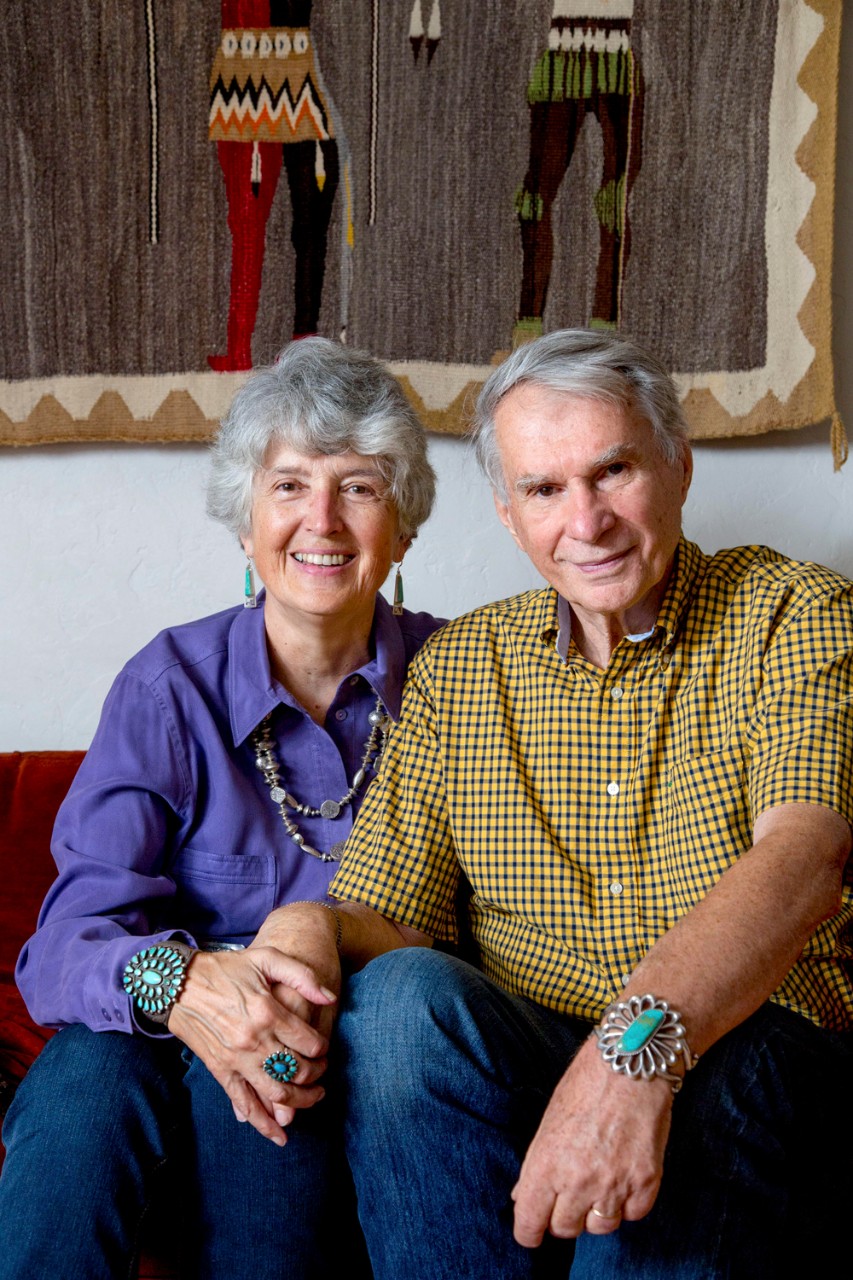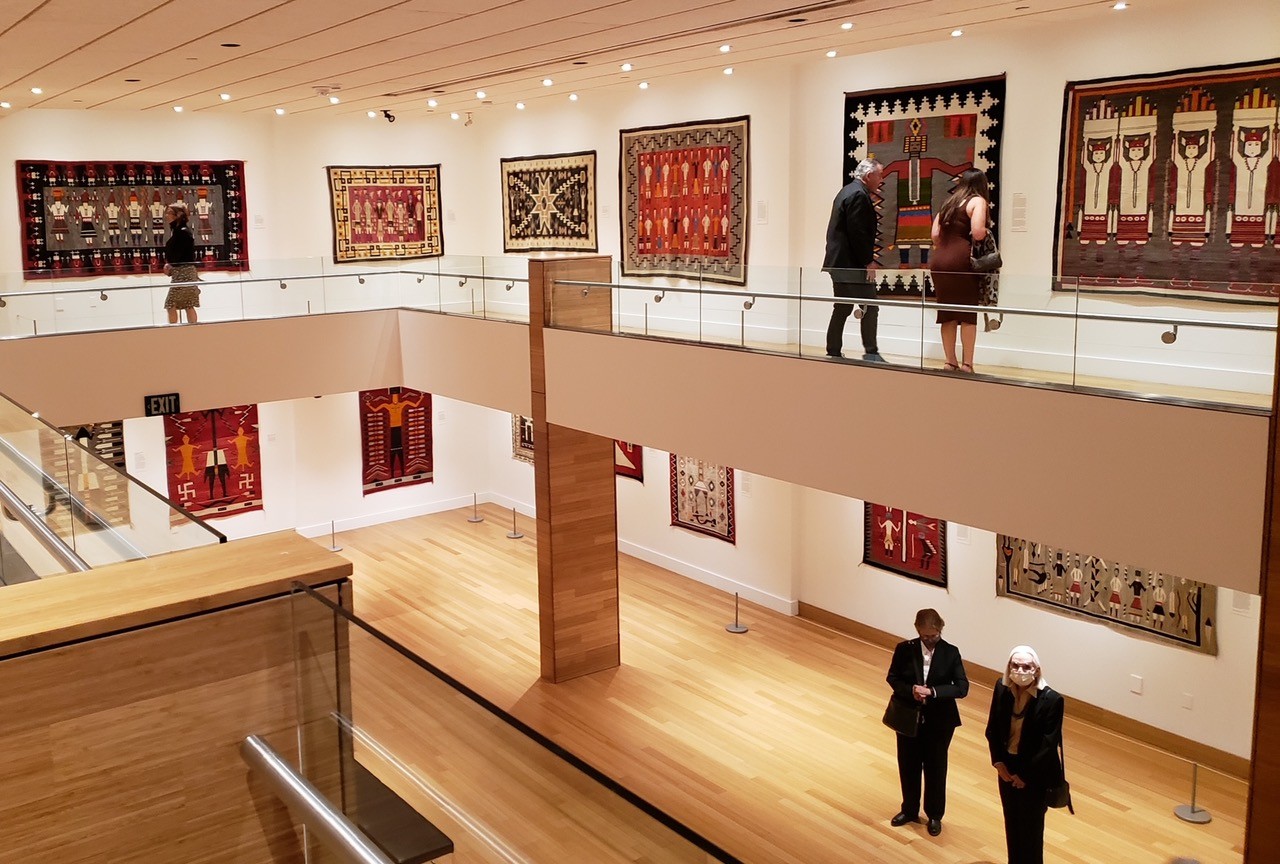Unidentified artist, Navajo, Yeibichai Pictorial textile, 1920s. Handspun wool, wool warp, natural wool color, aniline dye, 47 x 79 inches. From the exhibition Toward the Morning Sun: Navajo Pictorial Textiles from the Jean-Paul and Rebecca Valette Collection on view at The Heard Museum through February 13. (Photo: Craig Smith)
A vibrant exhibition of Navajo weavings from the collection of Rebecca Valette, Boston College professor emeritus of romance languages, and her husband, Jean-Paul, is now on view at The Heard Museum in Phoenix, Arizona, a venue dedicated to the advancement of Native American art.
The exhibition, titled Toward the Morning Sun: Navajo Pictorial Textiles from the Jean-Paul and Rebecca Valette Collection and co-curated by The Heard’s Andrew Mellon Fellows, is drawn from a gift to the museum by the Valettes of their acclaimed collection, which includes textiles primarily woven during the first three decades of the 20th century. The pair spent nearly 40 years collecting and researching the origins and history of these textiles, in many cases developing valuable biographical information about the weavers.






